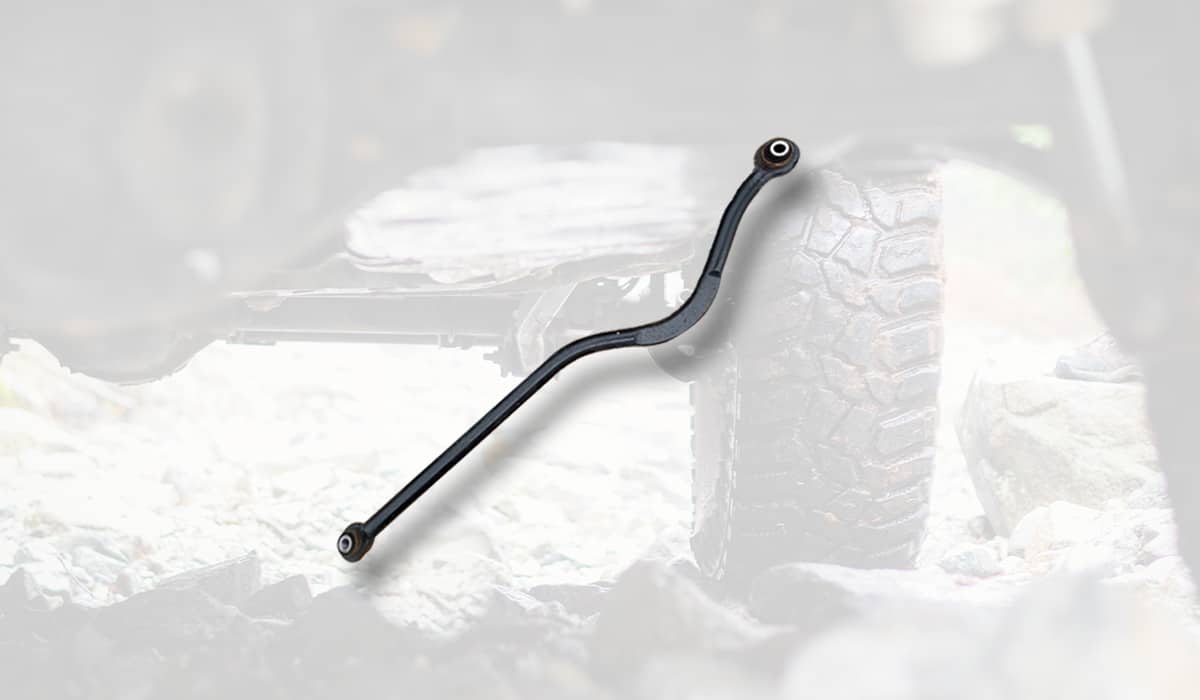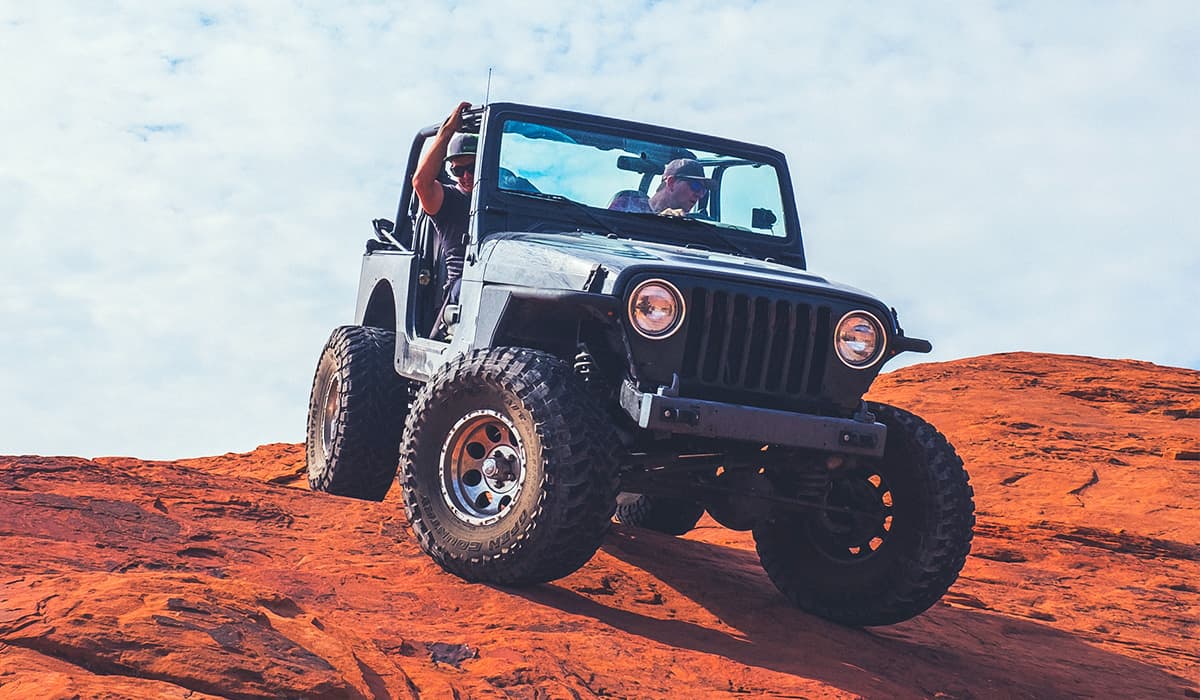What is a Track Bar, and Do You Need One?
If you have a jeep or other off-road vehicle, you’ll need a balancing mechanism for rough terrain. Experts recommend using a track bar to do this, especially if you drive off-road regularly. But what is a track bar, and do you really need one?
Track bars help suspension systems by keeping the axle centered. They prevent excessive motion at turns and on rough terrain, which reduces the chance of flipping over. You don’t need a track bar to drive off-road, but it’s a good investment if you want to protect yourself and your vehicle.
Let’s explore the details of what a track bar does, how it works, how to install it correctly, and whether you need one or not.
What is a Track Bar?

A track bar is a metal rod underneath the frame of your vehicle. It’s diagonally attached to the frame rail on one end, on the rear wheel’s side, and the axle on the other. It primarily functions to keep the axle under the vehicle’s frame and prevent excessive lateral (side-to-side) motion.
When driving on uneven terrain, you may have felt your vehicle swaying sideways, especially when you turn. While most off-road vehicles have good suspension that offsets this and prevents the vehicle from overturning, you can use a track bar to balance your vehicle even further.
The track bar functions to minimize the effects of the thrusting force or inertia and help stabilize the vehicle. You can use it to reduce the risk of off-road accidents and strengthen your vehicle’s frame.
How Does a Track Bar Work?
When you’re driving, you want the vehicle to stay stable, and any lateral (horizontal) movement can be scary. However, if you’re on an unbalanced road or driving in rough terrain, there’s a higher chance of the vehicle flipping over.
The track bar is designed to limit sideways movement and allows the vehicle frame to move up and down only when experiencing bumps and sharp turns.
The track bar keeps the axle aligned to the frame and centered under your vehicle. Without a track bar, you’ll have more restrictions on where you can drive, and off-road driving will put more strain on your vehicle’s suspension system.
A track bar also limits the movement of the vehicle’s suspension. There’s a relative motion between the frame and the wheels through the suspension, and without the aid of a track bar, you’ll experience more lateral movement.
While this doesn’t mean that your vehicle will roll (as long as the suspension is in place), it’s a risk not to have a track bar if you’re navigating rough terrain.
How Do You Install a Track Bar?
If you need to install or change the track bar in your vehicle, the first step is to know which kind of bar is compatible with your vehicle. Generally, there are three kinds of track bars, and each has a different installation process.
The standard track fits smaller vehicles like cars. However, if you get a suspension lift, it is advisable to change your track bar from the standard to an adjustable one. If you have a Jeep or other 4×4, the adjustable track bar is more suitable for you.
However, if you plan on taking your vehicle through rough terrain, you should get the heavy-duty bar. This is more suitable for extreme off-road driving and provides more stabilization than the previous two options.
What Do You Need to Install a Track Bar?
Installing or replacing a track bar requires some specialized tools. It’s also important to make sure that the floor jack and jack stands that you use must be rated for your vehicle’s Gross Vehicle Weight Rating or GVWR. Here’s what you’ll need:
- Floor jack
- Jack stands
- Wheel chocks
- Hammer
- Torque wrench
- Open end wrench
- Ratchet and sockets
- Ball joint separator tool (AKA “pickle fork”)
How to Install or Replace a Track Bar
Once you’ve chosen your track bar and gathered your materials, find someone else (preferably a mechanic) to help you. Changing a track bar is in most cases a two-person job.
Then follow these steps:
- Measure the axle center of your vehicle.
- Place wheel chocks both in front of and behind at least one rear wheel.
- Jack your vehicle up to access the axle.
- When replacing an existing track bar, remove the bolts attaching the bar to the axle. Remove the frame rails on both ends.
- Adjust the length of the new track bar.
- Clean the ends of the bar and the tying points on the vehicle as needed.
- Fasten the new track bar to the frame rail and the axle using bolts and screws according to the instructions that will come with the track bar. The adjustable side of the track should be attached to the rail, and the non-adjustable to the axle.
If you’re feeling hesitant about the process…you probably should! Taking your vehicle apart, even partially, isn’t for the faint of heart. The general instructions above offer a great map on how install a track bar, but if you lack experience, you probably owe it to yourself to just have a mechanic do it for you.
Track bars might need to be adjusted or changed once a year or two, depending on how often you use your vehicle and the road conditions. If you notice excessive motion, unusual behavior in the steering wheel, wobbly tires, or if your vehicle is hard to turn, you should get the track bar checked.
Is a Track Bar Necessary?
Your vehicle can work just fine without a track bar, and it’s not essential, even for off-road drives. But, if you want to protect your vehicle and reduce the risk of it rolling over, it’s best to install one.
The cost of changing or installing a track bar ranges from about $250 to $400, including the labor cost. The exact price will depend on the type of vehicle and the place where you get the work done.
Compared to many other additions that you may add to your 4X4, installing a track bar is definitely worth it.
What Type of Cars Are Compatible With a Track Bar?

Most track bars are designed for Jeeps and other 4X4s, although there are options that are compatible with other vehicle types. Since track bars are mostly designed to stabilize your vehicle in off-road terrain, most come in sizes that will only fit off-road vehicles.
However, you can also get a custom-built track bar for other vehicle types. Keep in mind that installing a track bar can affect the vehicle’s fuel efficiency, so while it does provide stability, it’s not ideal for vehicles that already have low ground coverage.
